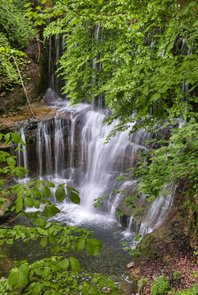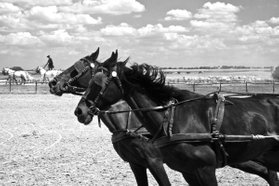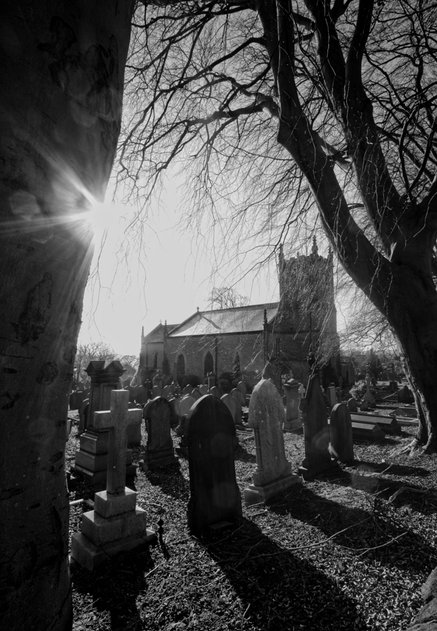When I was a young new photographer I relished the idea of having my own photographs featured in a gallery on the internet.
If I had found the information available on this new web site I would have enjoyed that wish long ago.
You need not wait as long as I did. Just go to: Creating My Photo Website
The new web site designed to help newcomers to photography
is accompanied by a new blog.
It appears three times each week.
One of the included featurs is called:
Photographers worth following
The list so far includes:
William Neill (27th dec. 2023)
Chris Upton (10th Jan. 2024)
Ross Hoddinott (19th Jan. 2024)
David Gray (2nd Feb. 2024)
Mike Wardynski (23rd Feb. 2024)
See for yourself:
Starting out in photography can be very confusing.
I've tried to take away some of the confusion with a new web site which is ambitiously called:
Give it a try if you need a helping hand. Let me know how you get on.
Most of the photographers that I know are completely immersed in their own photography and that of their peers. That is their world and they are lost in it. They seldom look back at the time when they first began their life in photography.
That was me until my grandson started to ask me some basic questions about photography. It made me think again about those hurdles to progress that the new photographer has to face.
The result is this new book designed specifically for the beginner, and aiming to lead them quickly and easily into creating images of which they can be proud. Soon they will become 'one of us'. More than that, they are the future of photography and they too can share in the fulfilment that photography can bring.
Why not pass this on as a present to someone who is just starting out?
"I strongly recommend "Photographing Water" not only to anyone who wants to photograph water, .... because much of what the book teaches is extendable to other subjects." (Amazon customer)
"The book is very easy and pleasant to read" (Luisa)
"An unbelievably fascinating book about water ... The author's insight coupled with his detailed explanations and reasoning made this book a valuable gem that has a place on any photographer's bookshelf." (Walt)
"Good 'learning by example' book ... Good examples with a concise discussion of how to achieve similar results." (Bill)
"Very good indeed. Simple and objective." (Amazon customer)
Photographing water well takes experience and lots of practice.
This book offers a short-cut with suggestions and advice on effective techniques.
The examples include images of running and falling water, snow, ice, clouds, mist and fog, dew, and steam.
A special feature of this book are the explanations of the forces of nature that are at work in each case.
This scientific understanding of the role of water in the landscape is a great aid to knowing how to photograph them with meaning as well as with an artistic flair.
One of the big appeals (and selling points) of image processing software is the availability of presets .
I have used, and valued these in my own work. So what is wrong with using them?
They make us all the same.
They create a common look amongst our images, and reduce the subtle differences between our styles of photographic art.
Original ideas are hard to come by. So, what do we do? We look to other photographers for inspiration.
As a landscape photographer I have always admired and tried to emulate the work of Ansel Adams. Closer to home, and in my earlier days, I have admired and learned from local photographers such as Les Yallup.
Now, two photographers stand out to me, both of whom I have followed for years. One is in the USA and the other in the UK
I have always been in awe of the creative work of William Neill. True, he has the wonderful landscapes of Yosemite all around him. What makes him special in my eyes is the way in which he captures the stunning beauty that is the essence of this landscape.
In the UK my inspiration comes from the creative work of Chris Upton. Chris has not only inspired me, he has also become and inspiration to others through his workshops and lectures.
None of us live in isolation. We are surrounded by other photographers who can stimulate us to do better.
I am not saying that we should simply copy the work that they do. Far from it. However their example can set us off on a creative journey of our own.
Then, just may be, we can become an inspiration to someone else.
During a recent trip to Switzerland I allowed time for creating images that could be sent to a stock library.
It was during this trip that I realised that my mind-set changed when I moved from taking photographs for my own needs to taking photographs for stock libraries.
This manifested itself in two important ways:
The subjects had to be suitable for stock library needs.
Every image had to fit the format and quality guidelines set by the stock library.
This may seem obvious, and it is, but so often I meet photographers who believe that the stock library is bound to be won over by their whimsical and quirky (and often unappealing) photographs.
If you want to succeed with stock libraries you need to stay inside their rules, and just be better at it than everyone else.
When I joined the Nottingham and Notts. Photographic Society I was very new to "real" photography. I devoured every piece of technical advice that I was given.
This was a wonderful community of photographers that made me alive to what photography could be.
Amongst the members was a superb photographer by the name of LesYallop. I learnt a great deal from him.
To this day, some 30 or more years later, I can remember his first piece of advice. "John," he said "set your camera on aperture priority and take control of depth of focus on every shot".
What a difference that advice made!
It is such a temptation to set everything on auto and trust that the camera will get it right. Full Auto will produce a well exposed picture, but it will not create the photograph that you really want. Doing that relies on your skill in controlling the depth of field.
If doing so makes your shutter speed struggle, then ramp up the ISO, with modern sensors hardly anyone will notice.
However, they will notice if the depth of focus is less than optimum.
A web site like this demands that you do a great deal of research into all aspects of photography. In particular there is a need to keep up with new developments.
However, in order to remain sane you have to be selective as to what you can cover.
It is also necessary to divide your time between hardware and software, and it is the software side of our world that has caught my eye recently. New image processing software is being paraded in front of us all of the time. The current batch is dominated by the introduction of AI (Artificial Intelligence) techniques to improve our images.
Not all AI based software is created the same. Nor have I had the opportunity to use every one of the new offerings. They are all quite probably a great advance on the past.
One of this new generation is the software that is produced under the Skylum banner and it is called Luminar Neo.
I have been experimenting with this software and have been really impressed by the quality improvements that it generates, and both the ease and speed with which this is achieved. I rarely react with this level of enthusiasm, but this one is proving to be special.
I have no doubt that there will be further enhancements to its current abilities. For now I am happy to go on this journey with the development team.
This software can be used either as an add-on to your existing processing tools or as a stand-alone package. I use it in combination with ON1 Photo RAW software.
Support is also available from the developers:
One means of support is through Luminar X Membership.
Luminar X Membership is a one-year subscription to a collection of exclusive Presets, Skies, Tutorials, Courses, and more. With the subscription, users will get:
• 10 exclusive new Luminar Looks every month
• 120 high-resolution Skies or Textures created by pro photographers
• 15% discount on all items in the Luminar Marketplace
• 4 exclusive photography tutorials every year
• 4 exclusive photography tutorials on editing every year
• An exclusive community for Luminar X Members
• Personal offers and exclusive gifts
If you do one thing today do yourself a favour and check out Luminar NEO .


Only £2.99 (or $2.99) each.
BLACK AND WHITE PHOTOGRAPHY
From your colour photograph to a great black and white
image.
-
Sample what the software will allow you to do.
-
Emulate the styles of the darkroom photographer
-
All the essentials are here in a direct
bullet point style - with many examples to stimulate your own photography.
This is not so much an instructional book but rather it is an instructive book. Although the use of some digital techniques is fully explained, I want to draw on those elements of film photography that helped to create a good, strong, and appealing black and white image.
There is no point in re-inventing the wheel. However, there is every point in bringing the design of the wheel into its present-day use. Read the book and think about it.
CLICK ON THE "BUY NOW" BUTTON AND DOWNLOAD YOUR COPY



In brief: black and white photography was, for decades, the only kind of photography.
It was the domain of the wealthy and the inventive. It gained a following from studio photographers who saw a business opportunity in making portraits for middle-class families.
In the late 1800s there was a rebellion against what we would now call documentary photography and against commercially driven formal portrait photography.
This rebellion was driven by those photographers who saw the potential of photography as a means of free artistic expression.
They wanted to create a new art form with photography at its heart.
If you want a good read about photographers during this period try: "Camera Work - The Complete Illustrations 1903-1917" attributed to Alfred Steiglitz and published by Taschen in 1997. (A search on the internet also reveals copies by Dover Publications (1978) with prices ranging from £8 - £15.)
Even in those early days there were debates about photo manipulation. One of the driving forces for image processing in which the photographer intervened between pressing the shutter and making final print was the desire for experimentation.
This was an age of technical discovery and inventiveness.
For example, a photograph might be given a sepia (or some other) tone, areas would be shaded in or objects removed if they offended the composition.
We are now able to immitate those experimental techniques by digital methods. The real question then as it is now is "do such tinkerings create a more artistic rendering of the subject?".
It is clear from reading some of the articles written at this time that black and white photography was not a poor relation of painting, it was a new medium for artistic expression. It was able to create images (pictures if you like) that were distinctly photographic and not 'pretend' imitations of painting.
Out of this early movement there came a spirit of free and highly creative thinking. The discussions were more likely to be about artistry in photography than about the latest gismo.
For me the connection with this era is Ansel Adams, arguably the world's best black and white landscape photogapher. He was active a couple of decades after this early period, but his thinking and approach to photography was built on the ideas that had been developed during this time.
In the blog features that follow this one I shall be looking more deeply into the work of Ansel Adams and the ideas that he left in print.
I am sure that you will find them stimulating perhaps even provocative. However, many of his observations about photography are as pertinent today as they were in his life-time(1902-1984).

This is the church in the centre of our village. It makes for a very traditional and very English village scene.
Protecting a web site from intruders, malware and viruses is extremely important.
My recommendation is for you to have a look at: AVG security software.